Hola una vez más.
Hi again.
Hi again.
En el siguiente enlace podéis ver nuestros próximos viajes fotográficos y de observación de aves y mamíferos nacionales y al extranjero. Espero que os gusten y os animéis a venir conmigo. Una experiencia que nunca olvidareis.
In the following link you can see our next national and foreign Birds and Mammals photographic and observation trips. I hope you like them and I encourage you to come with me. An experience that you will not forget.
En esta ocasión os muestro lo que pude fotografiar en una visita este mes de enero a algunas de las lagunas manchegas.
This time I show you what I was able to photograph during a visit this January to some of the La Mancha lagoons.
Cuando llegué a la primera laguna había bastante niebla pero no tardó mucho en disiparse. EL resto del día lucio el sol y la temperatura muy agradable.
When I got to the first lagoon there was quite a bit of fog but it didn't take long to dissipate. The rest of the day wore the sun and the temperature was very pleasant.
Como hacia niebla y vi que esta focha común (Fulica
atra) estaba fuera del agua enseñándome sus patas, tome esta fotografía y aprovecho para deciros que sus de dedos son lobulados y no palmeados como los de los patos.
As it was foggy and I saw that this Common Coot was out of water showing me its legs, I took this picture and I take this opportunity to tell you that its toes are lobed and not webbed like those of Ducks.
Es decir, son unos márgenes de piel aplanada que bordean los dedos pero que no están unidos como en el caso de las anátidas.
That is, they are margins of flattened skin that border the fingers but are not joined as in the case of Ducks.
Mientras la niebla se disipaba solo saque fotos a las aves que más cerca estaban del observatorio. Un bonito macho de cuchara común (Spatula
clypeata).
As fog dissipated, I only took photos of Birds that were closest to the observatory. A nice male Northern
Shoveler.
Hembra. Es una pena que por la niebla no se puedan ver los bonitos colores gis azulado que estos patos tienen en sus coberteras y el espejo alar verde brillante.
Female. It is a pity that the beautiful bluish chalk colors that these ducks have on their coverts and the bright green wing mirror cannot be seen.
Una panorámica desde el observatorio con un grupo de gaviotas sombrías (Larus fuscus) y flamencos comunes (Phoenicopterus
ruber).
A view from the observatory with a group of Lesser
Black-backed Gulls and Greater Flamingos.
Vi muy pocos zampullines cuellinegros (Podiceps
nigricollis) durante todo el día.
I saw very few Black-necked Grebes throughout the day.
Macho de ánade friso (Anas
strepera). Aunque no tiene colores muy vistosos, este pato me gusta mucho.
Male Gadwall (Anas strepera). Although it does not have very bright colors, I like this duck a lot.
Macho y hembra.
Male and female.
Macho de cuchara común (Spatula clypeata). Esta vez sin niebla. Mucho mejor.
Male Northern
Shoveler. This time without fog. Better.
Un grupo de malvasías cabeciblancas (Oxyura
leucocephala).
A flock of White-headed
Duck.
Cigüeñas blancas (Ciconia
ciconia).
White
Storks.
Flamencos comunes (Phoenicopterus
ruber).
Greater
Flamingos.
Vi muy pocos ánsares comunes (Anser
anser) en comparación con otras épocas del año.
I saw very few Greylag Geese (Anser anser) compared to other times of the year.
Sin embargo, había muchas gaviotas sabrías (Larus fuscus) y reidoras (Chroicocephalus
ridibundus).
However, there were many Lesser
Black-backed Gull and Black-headed
Gull.
Y también un numeroso grupo de fochas comunes (Fulica
atra).
And also a large flock of Common
Coot.
Gorrión moruno (Passer
hispaniolensis) macho.
Spanish
Sparrow male.
Pero lo que más me gustó de todo el viaje fue el poder estar a tan solo 5 metros de este calamón común (Porphyrio
porphyrio).
But what I liked the most about the whole trip was being able to be just 5 meters from this Purple Gallinule.
Primero le vi desde la furgoneta. Al bajarme para sacarle una foto vi que no le importaba mi presencia pues seguía comiendo y ya me había visto.
I first saw it from the van. When I got down to take a photo, I saw that he didn't mind my presence because it was still eating and it had already seen me.
Tiraba fuertemente de los carrizos para desenterrarlos y comerse la parte más tierna.
It strongly pulled reeds to unearth them to eat its most tender part.
Me maravilla ver como utiliza sus dedos para sujetar los carrizos y poder alimentarse mejor.
I am amazed to see how it uses its fingers to hold reeds and be able to feed them better.
En fin, aproveche esta rara oportunidad y le hice un bonito book.
Anyway, take advantage of this rare opportunity and I made a nice book.
También me gustó mucho poder contemplar a un macho de porrón acollarado (Aythya collaris). Es el que está en el centro de la imagen. Se trata de un pato originario de norte américa y que se ve muy pocas veces en la Península y menos aún en La Mancha. Fue un bimbo para mí aunque no se puso muy cerca.
I also really liked being able to see a male Ring-necked Duck. It is the one in the center of the image. It is a Duck native to North America and is rarely seen on the Peninsula and even less so in La Mancha. It was a bimbo for me although it didn't get very close.
Estaba en un bando de porrones europeos (Aythya
ferina).
He was in a flock of Common
Pochard.
Y también había al menos dos ejemplares de porrones pardos (Aythya
nyroca). Una hembra y un macho que se le puede ver justo delante del flamenco.
And there were also at least two specimens of Ferruginous
Duck. A female and a male that can be seen right in front of the flamingo.
De entre los muchos cormoranes grandes (Phalacrocorax
carbo) que vi en el día este fue el único que vi que estaba anillado.
Of the many Great Cormorants I saw that day, this was the only one I saw that was ringed.
Un macho de ánade azulón (Anas
platyrhynchos). Aunque sean muy comunes y los veamos en muchos sitios, no por ello deben despreciarse pues yo encuentro que son preciosos.
A male Mallard . Although they are very common and we see them in many places, they should not be despised because I find them to be beautiful.
Un subadulto de gallineta común (Gallinula
chloropus).
An immature Moorhen.
Un adulto.
An adult.
Zampullín común (Tachybaptus
ruficollis).
Little
Grebe.
Vi una pareja de pájaro moscón (Remiz
pendulinus). En esta foto el macho.
I saw a pair of Penduline
Tit. In this photo the male.
La hembra.
The female.
Una hembra de aguilucho lagunero occidental (Circus
aeruginosus).
A Eurasian Marsh
Harrier female.
Focha común (Fulica
atra).
Common Coot.
Había bastantes tarros blancos (Tadorna
tadorna). En la foto un macho.
There were quite a few Common Shelduck. In the photo a male.
Otro macho.
Another male.
En esta laguna conté 9 combatientes (Calidris
pugnax).
In this lagoon I counted 9 Ruff.
Solo vi un archibebe oscuro (Tringa
erythropus).
I only saw a Spotted
Redshank.
Lavandera cascadeña (Motacilla
cinerea).
Grey Wagtail.
Cigüeñuela común (Himantopus
himantopus).
Black-winged
Stilt.
Las cucharas comunes (Spatula
clypeata) eran los patos más abundantes. En la foto un macho.
Northern
Shoveler were the most abundant Ducks. In the photo a male.
Precioso.
Beautiful.
Inmaduro de flamenco común (Phoenicopterus
ruber).
Greater Flamingo immature.
Había varias parejas de tarabilla europea (Saxicola rubicola).
Tere were sevaral Common
Stonechat pairs.
Vi muy pocas cercetas comunes (Anas
crecca). En la foto un macho.
I saw very few Common Teals. In the photo a male.
Bisbita alpino (Anthus
spinoletta).
Water
Pipit.
Una lejana agachadiza común (Gallinago
gallinago).
A far Common
Snipe.
Y para acabar este blog os enseño este escribano triguero (Miliaria
calandra) que ya estaba cantando muy animadamente.
And to finish this post I show you this Corn Bunting that was already singing very animatedly.
Si queréis suscribiros a este blog de los viajes que hacemos pincha en el siguiente enlace: Suscribirse y haz clic en ¿Quieres suscribirte a nuestro blog?
If you want to subscribe to this post about the trips we do, click on the following link: Susbcribe and click on: Do you want to subscribe to our blog?
Espero que os haya gustado y hasta pronto.
I hope you like it and see you soon.
















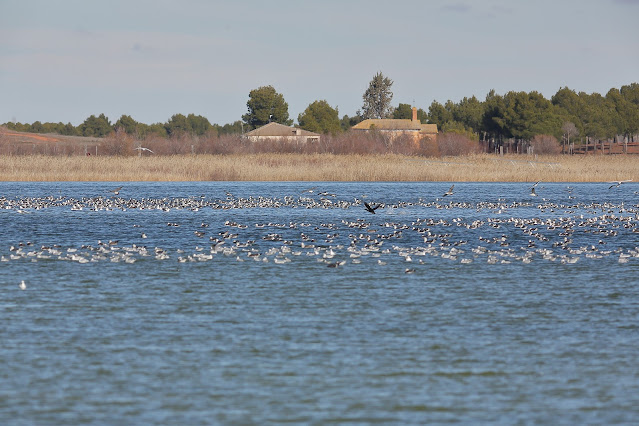





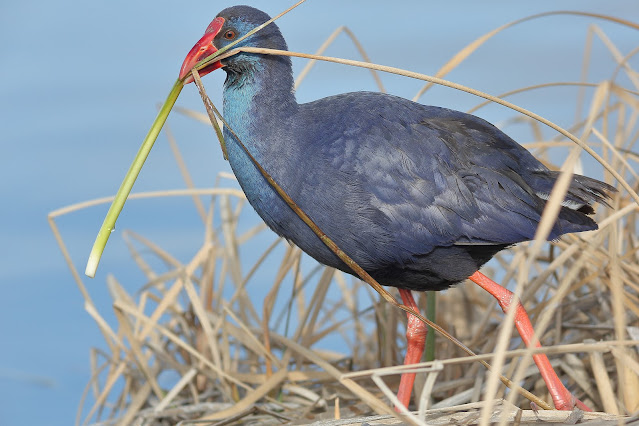










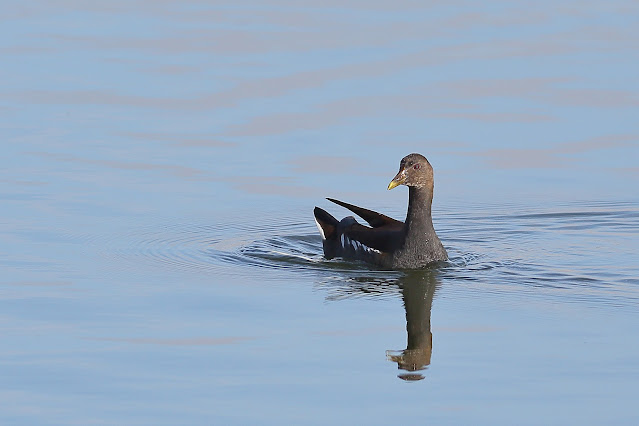













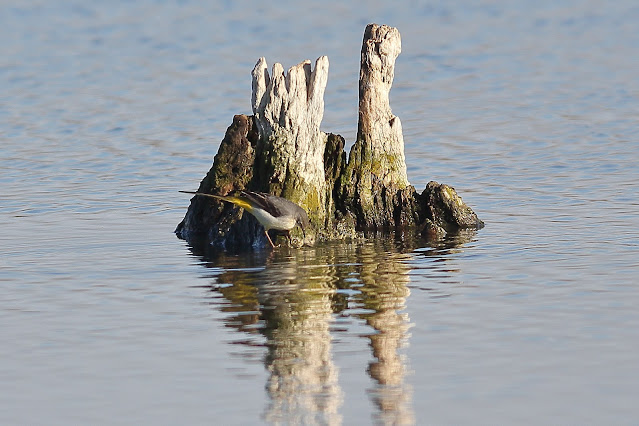









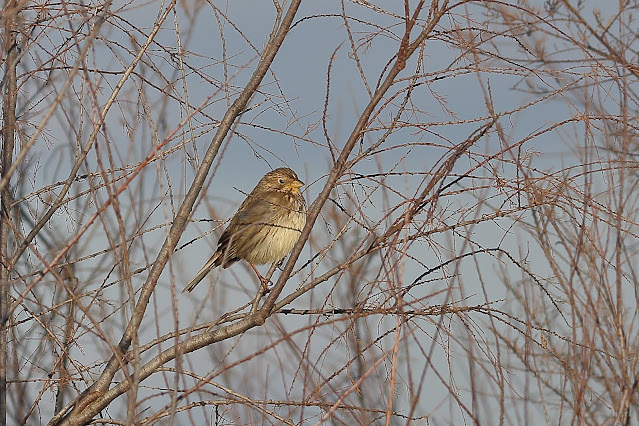
Muy bonitas fotos, Luis, gracias por compartir.
ResponderEliminarMuchas gracias a ti Teresa María. Me alegro que te haya gustado.
EliminarSaludos,
Luis Sitges
Hola a tod@s!
ResponderEliminarEstupenda colección de fotografías, que demuestran tu gran afición y conocimiento hacia las aves Luis.
Con tu permiso compartiré y utilizaré en el futuro, pues estoy preparándome para poder guiar y mostrar todos los recursos medioambientales de la Mancha Húmeda. Y como es sabido el de la visión y disfrute de las aves es uno de los más importantes de la zona, ¿verdad? Saludos cordiales!
P.D. Cualquier cosa por la zona que puedas necesitar comentamos, ¿vale?
Muchas gracias a ti,
EliminarMe alegra que te hayan gustado.
Saludos,
Luis